
Gaillardia is a genus of flowering plants in the family Asteraceae, native to North and South America. It was named after Maître Gaillard de Charentonneau, an 18th-century French magistrate who was an enthusiastic botanist. The common name may refer to the resemblance of the inflorescence to the brightly patterned blankets made by Native Americans, or to the ability of wild taxa to blanket the ground with colonies. Many cultivars have been bred for ornamental use.
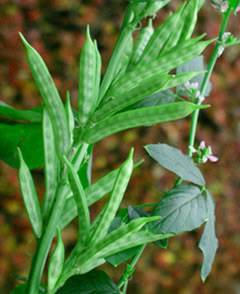
Cyamopsis is a genus of the family Fabaceae. Its species are distributed across sub-Saharan Africa, Saudi Arabia, Pakistan, and India. Typical habitats include tropical seasonally-dry thorn scrub and grassland, often in floodplains, stream beds, and pans, and in open sandy or rocky areas.
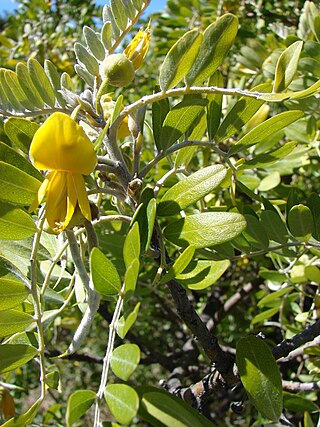
Sophora is a genus of about 45 species of small trees and shrubs in the pea family Fabaceae. The species have a pantropical distribution. The generic name is derived from sophera, an Arabic name for a pea-flowered tree.

Amorpha is a genus of plants in the pea family, Fabaceae. All the species are native to North America, from southern Canada, most of the United States (US), and northern Mexico. They are commonly known as false indigo. The name Amorpha means "deformed" or "without form" in Greek and was given because flowers of this genus only have one petal, unlike the usual "pea-shaped" flowers of the Faboideae subfamily. Amorpha is missing the wing and keel petals.

Parkinsonia, also Cercidium, is a genus of flowering plants in the pea family, Fabaceae. It contains about 12 species that are native to semi-desert regions of Africa and the Americas. The name of the genus honors English apothecary and botanist John Parkinson (1567–1650).

Pickeringia is a monotypic genus of flowering plants in the legume family, Fabaceae. It was recently assigned to the unranked, monophyletic Cladrastis clade. It was named after the naturalist Charles Pickering. Its only species is Pickeringia montana, which is known by the common name chaparral pea. It is native to California, where its distribution extends along the Coast Ranges and the Sierra Nevada foothills, as well as the Peninsular Ranges of Southern California and northern Baja California. It is also known from Santa Cruz Island.

Thermopsis rhombifolia, also known as prairie thermopsis, is a flowering plant in the legume family. It is native to North America, where it is found in the Great Plains, with extensions into the lower canyons of the Rocky Mountains. Its natural habitat is dry grasslands and woodlands.

Baptisia is a genus in the legume family, Fabaceae. They are flowering herbaceous perennial plants with pea-like flowers, followed by pods, which are sometimes inflated. They are native to woodland and grassland in eastern and southern North America. The species most commonly found in cultivation is B. australis.
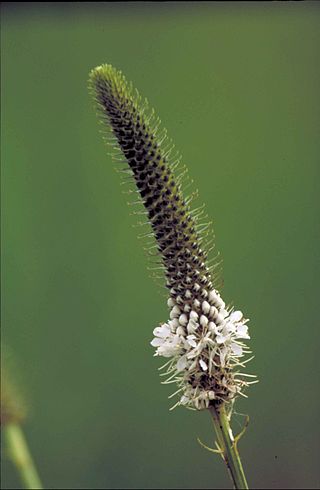
Dalea is a genus of flowering plants in the legume family, Fabaceae. Members of the genus are commonly known as prairie clover or indigo bush. Its name honors English apothecary Samuel Dale (1659–1739). They are native to the Western hemisphere, where they are distributed from Canada to Argentina. Nearly half of the known species are endemic to Mexico. Two species of Dalea have been considered for rangeland restoration.
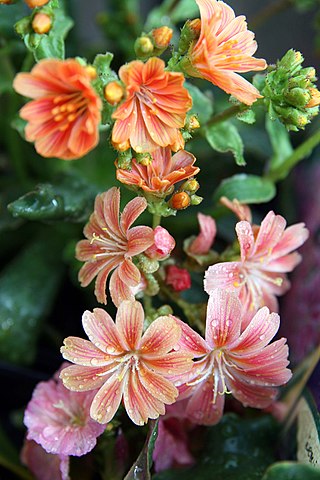
Lewisia is a plant genus, named for the American explorer Meriwether Lewis (1774-1809) who encountered the species in 1806. The native habitat of Lewisia species is rocky ground and cliffs in western North America. Local Native Americans ate the roots, which have also been used to treat sore throats.
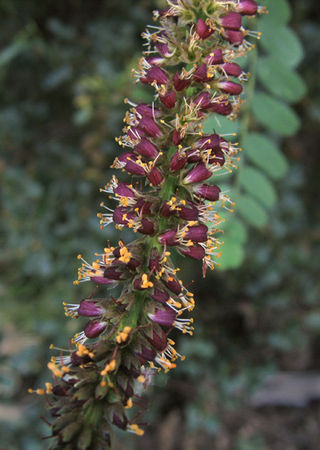
Amorpha californica is a species of flowering plant in the legume family known by the common name California false indigo.

Kallstroemia is a genus of flowering plants in the caltrop family, Zygophyllaceae. The approximately 17 species it contains are native to tropical and warm temperate regions of the Americas. The flower and fruit morphology is similar to Tribulus. The convex fruits separate into about 10 nutlets each with one seed. The genus is named after A. Kallstroem who lived in the 18th century.

Marina is a genus in the legume family, Fabaceae. It includes 40 species native to southern North America, ranging from California and New Mexico through Mexico and Central America to Costa Rica. They are known as the false prairie clovers. Unlike the related prairie clovers, which bear two ovules per fruit, false prairie clovers bear only one ovule per fruit.

Psorothamnus is a genus of plants in the legume family. These are shrubs and small trees. Many are known by the general common name indigo bush. Some are referred to as daleas, as this genus was once included in genus Dalea. These are generally thorny, thickly branched, strongly scented bushes. Most species bear lupinlike raceme inflorescences of bright purple legume flowers and gland-rich pods. Psorothamnus species are native to the southwestern United States and northern Mexico. The genus is paraphyletic and it has been proposed that the genus Psorodendron be reinstated to accommodate sections Xylodalea, Capnodendron, and Winnemucca.
Errazurizia (dunebroom) is a genus of flowering plants in the family Fabaceae. It belongs to the subfamily Faboideae.

Euchresta is a genus of flowering plants in the family Fabaceae. It belongs to the subfamily Faboideae. It includes four species native to eastern and southeastern Asia, from the eastern Himalayas to Indochina, southern China, Korea, Japan, Taiwan, and Malesia.
Nissolia, the yellowhoods, is a genus of lianas in the legume family, Fabaceae. It includes 32 species native to the tropical and subtropical Americas, ranging from Arizona and Texas through Mexico, Central America, and South America to northern Argentina. It belongs to the subfamily Faboideae, and was recently assigned to the informal monophyletic Adesmia clade of the Dalbergieae.
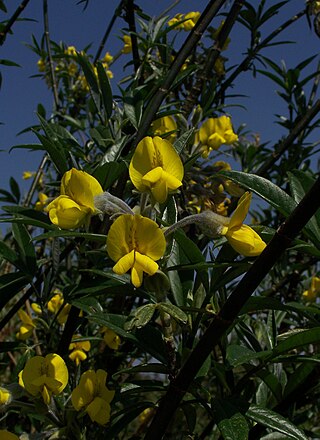
Piptanthus is a genus of flowering plants in the legume family, Fabaceae. It includes two species of shrubs native to the Himalayas, Tibet, Myanmar, and western China. They grow in montane grassland, thicket, and forest margins.

Ratibida is a genus of North American plants in the tribe Heliantheae within the family Asteraceae. Members of the genus are commonly known as prairie coneflowers or mexican-hat.

Thermopsis californica, known by the common name California goldenbanner, is a species of flowering plant in the legume family.


















